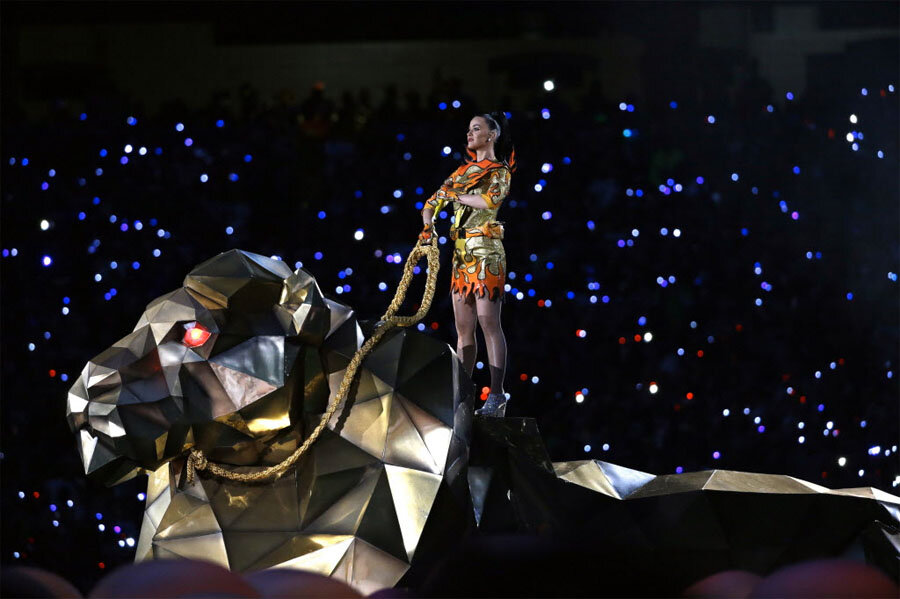Katy Perry: Here's where that Super Bowl lion came from
Loading...
It started, Michael Curry said, when Katy Perry's team asked, "How do you make a powerful entrance at the Super Bowl?"
It ended, as most of America saw at halftime of Sunday's big game, on the field in Glendale, Ariz., with pop star Perry steering a 30-foot-long, 14-foot-tall lion into the spotlight.
The whole process, from first discussion to finished work, took about eight weeks, said Curry, whose world-renowned theatrical production company is based in Scappoose, Ore.
At any given time, from 25 to 30 members of the team at Michael Curry Design worked on the Super Bowl project, putting in about 3,500 person-hours, he estimated. That included the work at the Super Bowl, where the beast was guided by a team of puppeteers led by Oregonians Jarred Kearsley and Sam Perkins.
The compressed time frame worked because of the team's experience with staging theatrical spectacles and because Curry and Perry had worked together previously. Curry's team, for example, created the white Egyptian horse and other props Perry used on her 2014 Prismatic tour.
Michael Curry Design has a portfolio that speaks to the company's broad success in live productions, in the United States, and around the world. Sunday's game was the company's fourth Super Bowl, but it is best known for its live theater, from "The Lion King" to Cirque du Soleil. His team is busy this year prototyping pieces for the 2016 Olympics in Rio de Janeiro, he said.
The Super Bowl show is especially gratifying because it appeals to such a broad audience, including many people who may not see a show on Broadway. When Perry entered atop the lion, Curry said, "we were all very uplifted and elated. It was as if we had won the Super Bowl ourselves."
The lion, with its carbon-fiber skin covered with a mosaic of gold mirror planes, isn't coming back to Oregon. Curry said he suspects it's in Perry's warehouse in the Los Angeles area.
"Katy," he predicted, "will find a new life for it."





